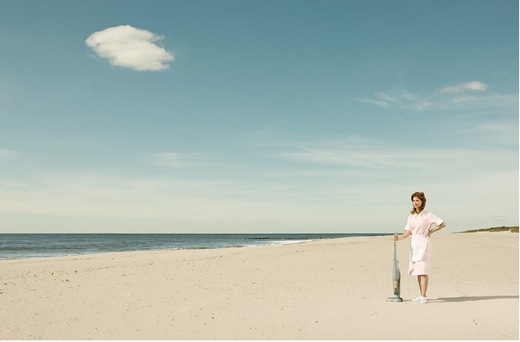There's been a faint hum about the world of couturiers and fashionphiles all around the world, generated by Savage Beauty, the much anticipated retrospective of the late and great Alexander Mcqueen. Exhibited at the Metropolitan Musuem of Art in New York, the show is sure to capture the emotion and the wonderment that surround Mcqueen's legacy. I could go on and on in obituary style, about his immeasurable contribution to fashion, his nuanced conflation of Saville Row, costume, couture and a very atypical femininity- but so many others have done so more eloquently already.
Mcqueen had a Shakespearian quote tattooed on his arm that read, "Love looks not with the eyes but with the mind."
and fittingly, his collections evinced their true hold over us by the histories they conjured. When Andrew Bolton, Costume Institute Curator at the MET, was interviewed by
Hint Magazine he said of Mcqueen,
"When he was asked once in an interview what his Scottish roots meant to him, he responded, 'Everything.'"
The violent British colonization of Scotland is an obvious historical reference for the
Highland Rape show that launched his career in the early 90's (referencing in particular, the
Battle of Culloden). But with this small insight into the mind of Mcqueen, one recognizes then, the roots of the suggestive violence that he coupled with his grandiose and delicate manifestations of beauty. It has been the target of much criticism and the face of his controversial showmanship but any body of work as powerful as his must reference the contradictions and the pains of civilization, as well as the joys.
To sum it up,
The Guardian featured the best quote about the exhibit from Andrew Bolton:
"The concept of the Sublime... underlies the premise of the exhibition that is an exploration of McQueen's profound engagement with romanticism. With this in mind, it is divided into categories: The Romantic Mind, Romantic Gothic, Romantic Exoticism, Romantic Primitivism and so forth. That McQueen was romantic – with a small "r" – there is no question. His work is testimony to that and indeed he described himself thus on many separate occasions over the years."
Below is a preview of the Savage Beauty exhibit at the Metropolitan Museum of Art, running from May 4, 2011–July 31, 2011


















































